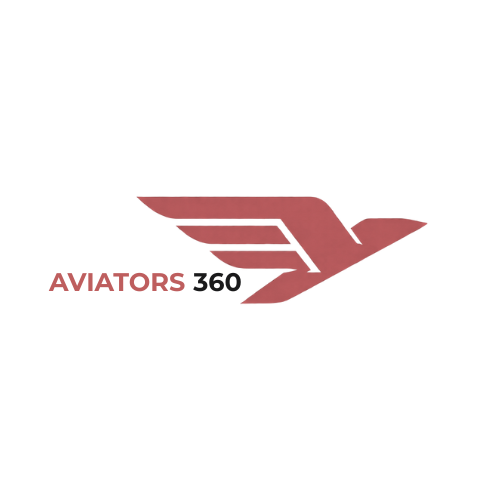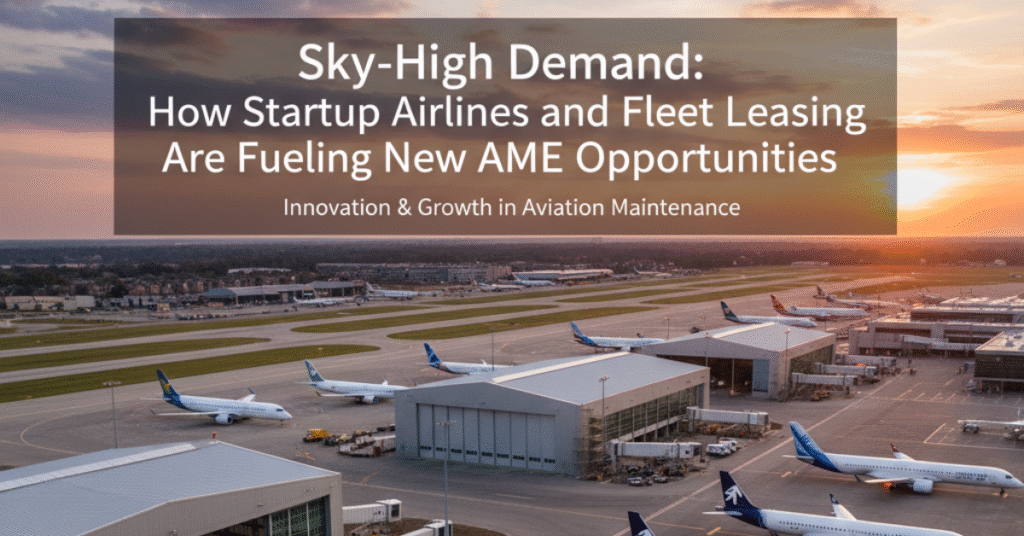The global aviation landscape is witnessing a seismic shift. From the hangars of the Middle East to the emerging markets of Asia, a new generation of startup carriers is taking flight. Ambitious ventures like Riyadh Air, backed by Saudi Arabia’s Public Investment Fund, are not just launching airlines; they are launching a wave of new opportunities across the industry.
For Aircraft Maintenance Engineers (AMEs) and technicians, this trend is particularly significant. The business model for these modern startups heavily relies on fleet-leasing activity, creating a dynamic and growing demand for specialized skills on the latest-generation aircraft. This isn’t just a boom in hiring—it’s a transformation of the global maintenance, repair, and overhaul (MRO) landscape.
The Startup Surge: A New Playbook for Launching Airlines
Startup carriers like Riyadh Air face a critical challenge: how to build a large, modern fleet quickly and efficiently without the colossal capital expenditure of purchasing aircraft outright. The answer lies in the commercial aircraft leasing market.
By leasing a significant portion of their fleet from lessors like AerCap or Avolon, these airlines can:
Scale Rapidly: Secure dozens of aircraft to launch extensive route networks from day one.
Access New Technology: Immediately deploy state-of-the-art, fuel-efficient planes like the Boeing 787 Dreamliner or Airbus A320neo.
Manage Financial Flexibility: Convert fixed asset costs into more manageable operational expenses.
This model is powering the ambitious plans of Riyadh Air, which has placed massive orders and leases for nearly 100 Boeing 787s. But behind every leased aircraft is a critical need for certified maintenance expertise.
The Ripple Effect: Four Key Opportunities for AMEs
The rise of the leased fleet model creates a multi-layered demand for maintenance professionals. Here’s where the new opportunities lie:
1. Direct Employment with the New Carrier
The most obvious opportunity is with the startup airlines themselves. Carriers like Riyadh Air need to build their entire technical operations division from the ground up. This means hiring everything from Lead Engineers and Line Maintenance Technicians to Quality Assurance Managers and Planning Specialists. For AMEs, joining a startup offers the chance to shape a new maintenance culture and work with a brand-new, single-type fleet from its inception.
2. Roles with Aircraft Lessors (The “Bankers”)
Aircraft lessors are not just financiers; they are asset managers. They have a vested interest in protecting the value of their multi-million dollar investments. This requires a deep understanding of the aircraft’s technical status and maintenance condition throughout the lease. Consequently, lessors hire:
Technical Asset Managers: To oversee maintenance planning, lease-return conditions, and technical compliance.
Field Service Representatives: To act as the on-the-ground technical liaison between the lessor, the airline, and the MRO.
These roles require a strong technical background combined with business and negotiation skills.
3. The MRO and Service Center Boom
A flood of new, next-generation aircraft creates a parallel surge in demand for MRO services. Whether it’s heavy checks, component repairs, or engine overhauls, the facilities certified to work on Boeing 787s, Airbus A350s, and 737 MAXs will see their hangars filled for years to come. This translates into stable, long-term career opportunities for AMEs at established and new MROs worldwide, especially in strategic regions like the Middle East and Southeast Asia.
4. Specialization in “Green Time” and “Transition” Management
Aircraft transitioning from one lessee to another, or being delivered fresh from the manufacturer, require specific “green time” maintenance and pre-lease inspections. This niche area demands engineers who are experts in specific aircraft types and the rigorous process of ensuring an aircraft meets all contractual and safety standards before entering service. This specialization is highly valued and less susceptible to market downturns.
The Skills in Demand: Beyond the Wrench
While core maintenance skills are the foundation, the new landscape rewards specific expertise:
Type Ratings on New-Generation Aircraft: Holders of licenses for the 787, A350, A320neo, and 737 MAX are, and will continue to be, in extremely high demand. The value of these certifications is skyrocketing.
Data and Digital Acumen: Modern aircraft are flying data centers. Familiarity with Aircraft Health Monitoring Systems (AHMS), digital logbooks, and data-driven maintenance planning is a significant advantage.
Regulatory Agility: Working with a global lessor or a startup often means navigating multiple national aviation authorities (NAAs). Understanding EASA, FAA, and GCAA regulations is crucial.
Strong Communication and Project Management: Technical asset management and lease transition work is as much about managing relationships and timelines as it is about turning a wrench.
Positioning Yourself for the Wave
For current and aspiring AMEs, this is a call to action. To navigate this expanding job market, professionals need to be strategic. This includes pursuing the right type ratings and leveraging industry-specific job platforms to find these high-value roles. Recent market analysis from aviation career specialists like Aviators360 highlights a sharp increase in postings for “Technical Asset Manager” and “B787 Licensed Engineer” roles, directly correlating with the launch timelines of new carriers. This data confirms that for those with the right skills and a forward-looking mindset, the opportunities are not just on the horizon—they are already being cleared for takeoff.
Conclusion: A Future-Focused Trajectory
The trend of startup carriers and fleet leasing is more than a business headline; it’s a powerful engine for career growth in aviation maintenance. It is creating a sustained, global demand for skilled engineers who can keep the world’s most modern fleets airworthy. By aligning your skills with the needs of this new era and utilizing targeted resources to find opportunities, you can ensure your career trajectory is as ambitious as the airlines taking to the skies.

